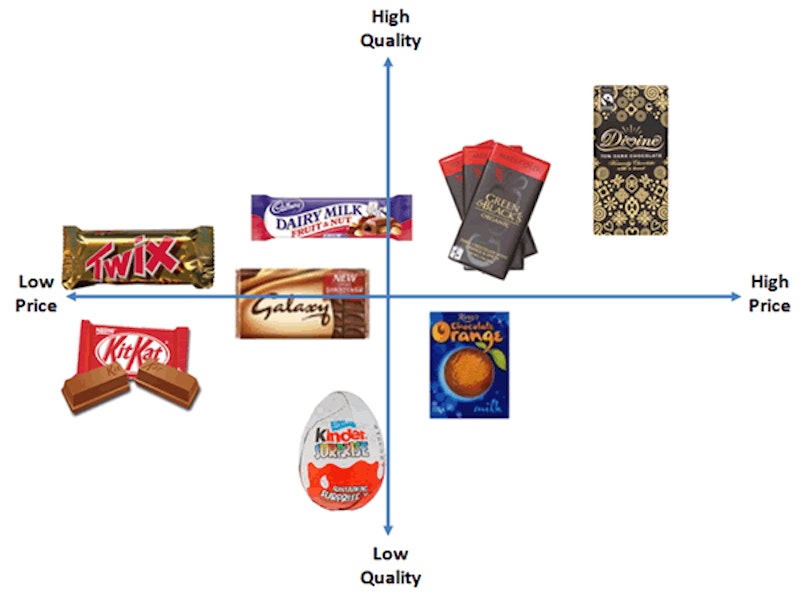Study Notes
Marketing: Market Mapping (GCSE)
- Level:
- GCSE
- Board:
- AQA, Edexcel, OCR, IB
Last updated 22 Mar 2021
Once an entrepreneur has identified an appropriate segment of the market to target, the challenge is to position the product so that it meets the needs and wants of the target customers.
One way to do this is to use a "market map" (you might also see this called by its proper name – the "perceptual map").
The market map illustrates the range of "positions" that a product can take in a market based on two dimensions that are important to customers.
Examples of those dimensions might be:
- High price v low price
- Basic quality v High quality
- Low volume v high volume
- Necessity v luxury
- Light v heavy
- Simple v complex
- Lo-tech v high-tech
- Young v Old
Let's look at an illustrated example of a market map. The map below shows one possible way in which the chocolate bar market could be mapped against two dimensions – quality and price:

How might a market map be used?
One way is to identify where there are "gaps in the market" – where there are customer needs that are not being met.
For example, in the chocolate bar market, Divine Chocolate (a social enterprise) successfully spotted that some consumers were prepared to pay a premium price for very high quality chocolate made from Fairtrade cocoa. Green & Black's exploited the opportunity to sell premium chocolate made from organic ingredients. Both these brands successfully moved into the high quality / high price quadrant (see above) before too many competitors beat them to it.
The trick with a market map is to ensure that market research confirms whether or not there is actually any demand for a possible "gap in the market". There may be very good reasons why consumers do not want to buy a product that might, potentially, fill a gap.
You might also like
Market Segmentation
Study Notes

Revising all those business models!
22nd May 2018
Market Mapping
Study Notes